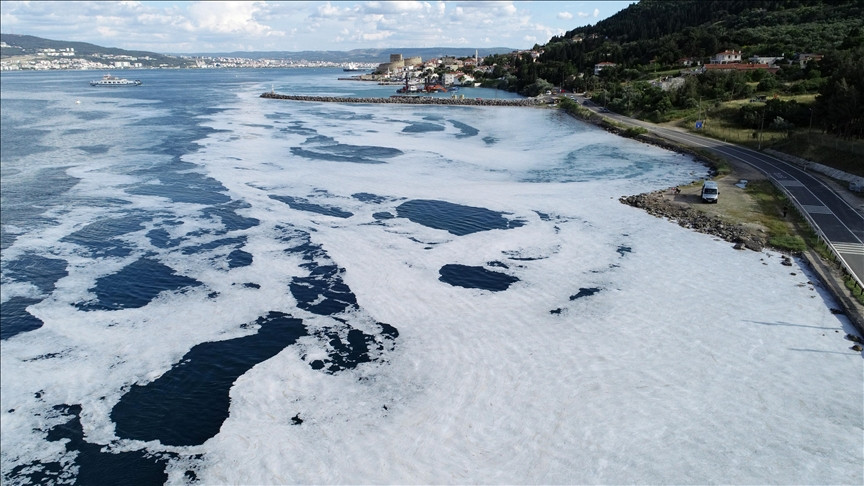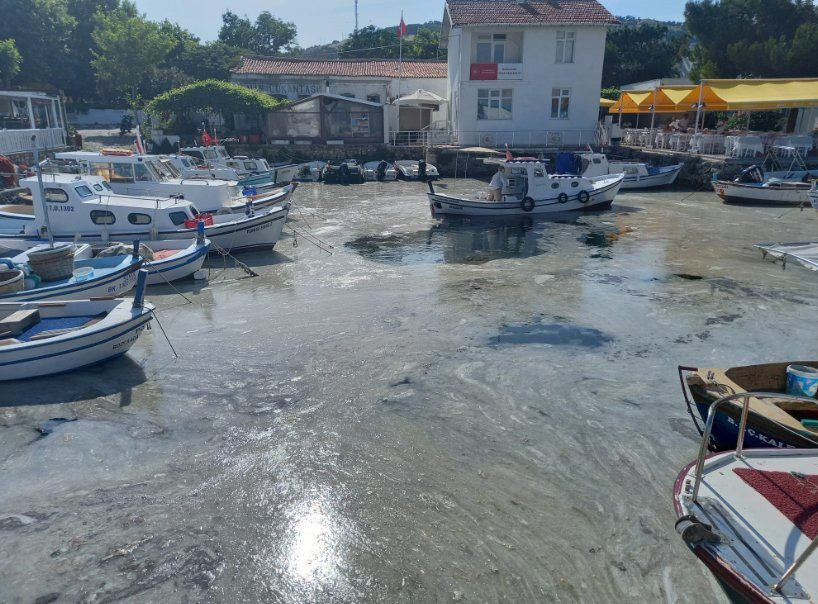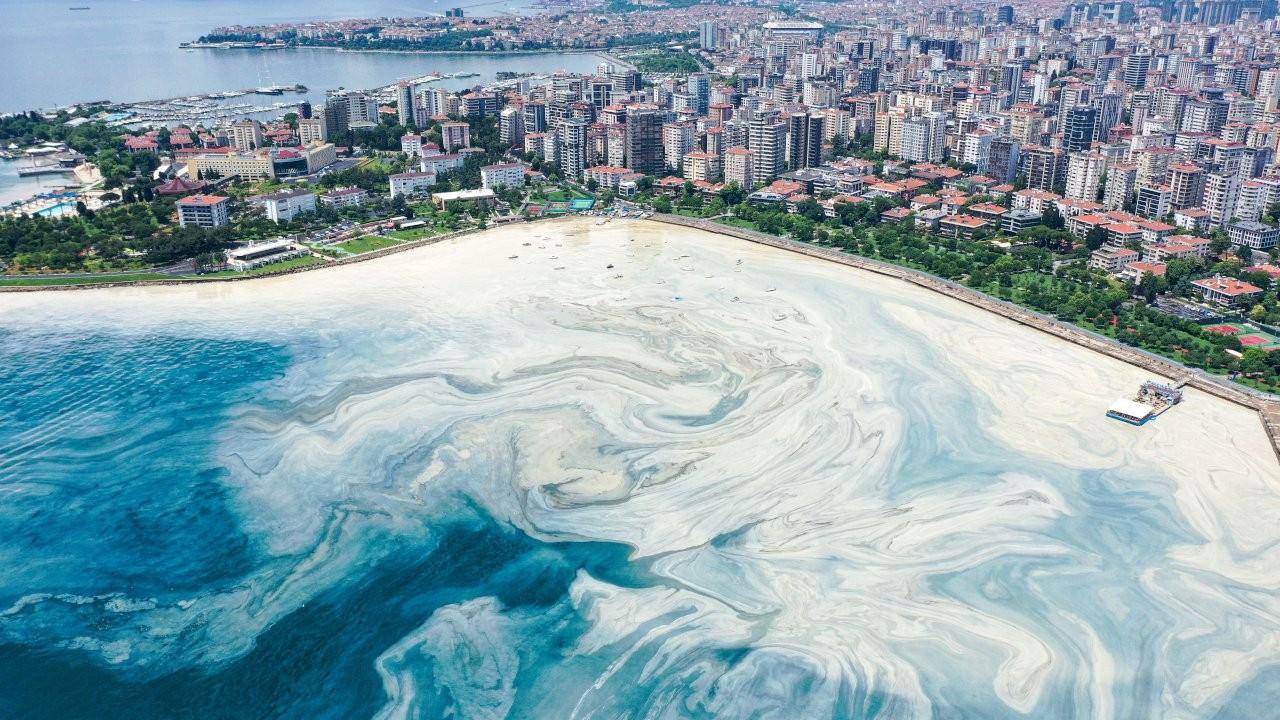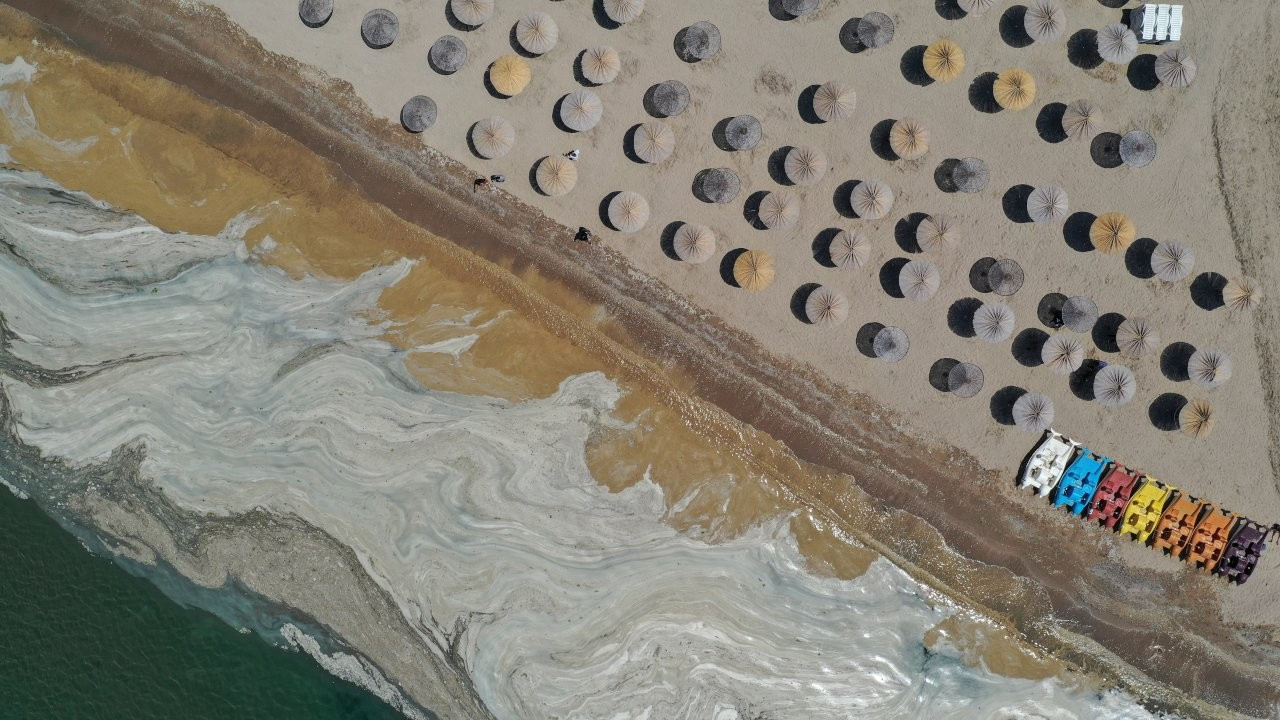Marine mucilage plaguing Marmara Sea getting closer to Aegean beaches
Marine mucilage, aka "sea snot" that's been plaguing the Marmara Sea was observed in the northern Aegean Sea, locals reported on June 20. Caused by an over-reproduction of microalgae and exacerbated by an increase in water temperatures, marine mucilage was observed on the beaches of Aegean islands Gökçeada and Bozcaada.
Duvar English
Marine mucilage, aka "sea snot," is getting closer to the beaches in the Aegean Sea following the outbreak that's plagued the Marmara Sea for weeks, locals reported on June 20.
Caused by an over-reproduction of microalgae, marine mucilage in the Marmara Sea has spread drastically in volume in recent weeks, exacerbated by an increase in water temperatures.

Onyedi Eylül University's Marine Faculty Dean Prof. Mustafa Sarı recorded underwater footage of the mucilage in the Dardanelles Strait, noting that the pollution was present as far deep as 17 meters.
A photo from a beach on Aegean island Gökçeada also showed a streak of mucilage plaguing the shore, spreading as far inland as the sand.
The sea snot also reached Bozcaada neighboring Gökçeada, appearing to cover the surface of the water in fishing ports, Turkish news agencies also reported on June 18.

Turkey's Environment and Urbanization Ministry has been carrying out efforts to clean out the sea snot, with Minister Murat Kurum reporting on June 20 some 4,555 cubic meters of mucilage scooped out of the Marmara Sea in the past 12 days.
The Turkish state also fined eight businesses surrounding the inland body of water, Kurum said on June 18, adding that the surface cleanup was ongoing in 255 different locations.
Meanwhile, experts have said that the only true solution to the sea snot plague was for industrial production to switch to a strict zero-waste policy and to implement recycling practices.

 Aerial photos show how 'sea snot' outbreak continues at full speed in IstanbulEnvironment
Aerial photos show how 'sea snot' outbreak continues at full speed in IstanbulEnvironment Drone images reveal shocking extent of 'sea snot' outbreak in IstanbulEnvironment
Drone images reveal shocking extent of 'sea snot' outbreak in IstanbulEnvironment